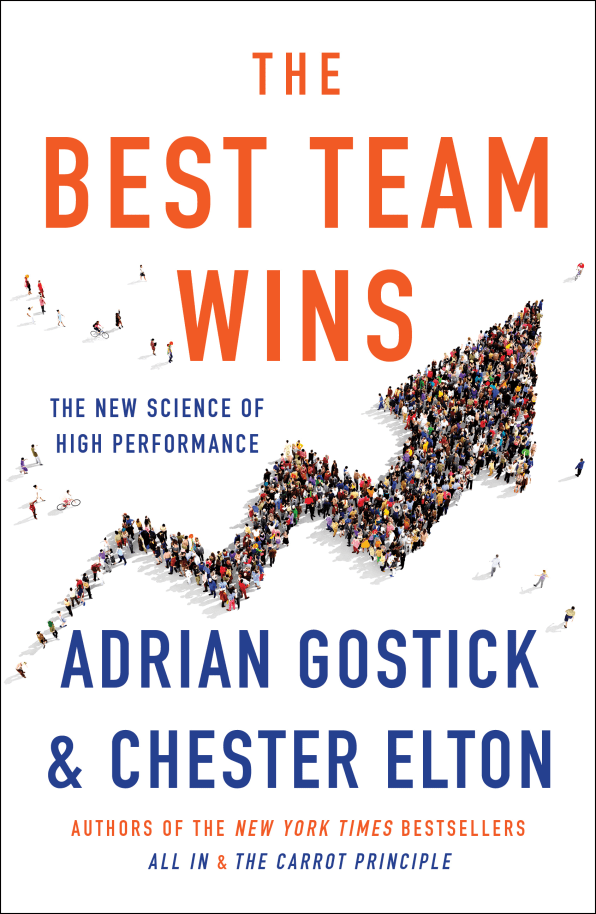… but I digress. I realized that I had to push down the guilt and consider that perhaps being a mom isn’t just about being present. That it isn’t just about being able to cook every meal and kiss every boo boo. I realized that it had to be about, at least for me, showing my son that there is a balance. That mom will always love him and will always be there to kiss every boo boo if he needs it.
But also but there are other sides to me and to all people. Being Dominic’s mother is the greatest blessing and privilege I have ever been given. It is more important than anything I will ever do. Is more profound than a job I will ever have. He is the most important thing in my life. But it is okay for him not to be the only thing. I realize that being a mother is not the sum total of me and that’s okay. Part of being a mom is providing an example. He should know that people work for opportunity. He should know that women can be accomplished and educated and powerful and can provide.
My son will know these things because I will show him. I have ambitions and dreams and goals that I will work to attain as his mother not in spite of being his mother. People think you have to choose. People think you have to pick a side – motherhood or career. I disagree. I think maybe part of being a good mother is being well rounded. It’s finding a way to be happy. If you’re happy involves success in your career can you find the way to balance it. You make a way to be both a great mother and advance your career in that order.
As you can see, this can be a difficult balance because many women struggle with the decision of having to decide between work and childcare.
However, if you’re planning to stay at home with the kids once you have them, create a plan that enables you to keep your resume fresh and skills updated while you do so. One never knows what the future holds which may lead to you to re-enter the workforce hoping that someone will hire you once again.
Communication
Talk to your partner about managing your money together if you don’t already have that arrangement in your relationship. At the very least, you should have a role in the management of the money in your relationship.
Maintain access to all accounts. You’d be surprised how many women don’t have access to the money they make. Know where your accounts are stored, check your credit report as well as your partner’s and review the status of all accounts listed on the credit report to keep yourself abreast of everything going on financially.
Women are often the default caregivers in many families. This often results in the decision to leave the workplace which can have detrimental effects on their career when returning to the workplace.
Sadly, the longer a woman off-ramps, the harder it is to get back into her field of choice. When deciding to start a family, these are the issues that should be discussed ahead of time via proper planning to ensure a smooth on-ramp back into the workplace.
On the upside, we do live longer, but those of us who stay at home with children to raise them ourselves also have the burden of sacrificing our highest earning potential during our child-bearing years.
One of the best parts about running a blog that discusses women and money is the interactions I have with women behind the scenes. Readers, needing answers to pressing money issues. And, while I am not a financial advisor, and articles written here or across other social networks and partner sites should never be construed as such, I am often able to give insight into issues that come up during our email exchanges.
A question often asked is:
“How can I make my own money without sacrificing time with my family? I want to stand on my own 2 feet”
Why This Is Important
This is an important issue for women as we should be able to stand on our own so that we’re prepared for whatever life brings our way. We’re not five year olds needing to ask daddy for $5 to buy ice-cream. Yes, this is a touchy subject, depending on whom you’re talking to but an important topic nonetheless. Too many women find themselves without options once their partners are no longer in the equation, whatever the reason.
The Road Back To Independence
The money struggle for women is real. Whether you’re married, single or newly divorced and want to learn how to manage money properly, it’s best to start here: 21 Days To Rock Your Finances: Day 1- Create A 1 Year Financial Plan.
Understanding the minutia of money management is of utmost importance as we often think that if we make the money, the money management skills will just show up. Not at all. In fact, the opposite is true. We must master our money mindset before we make the moolah! Teaching yourself these principles will give you the foundations needed to be successful.
Now let’s talk about you, the budding money making machine!
Barriers To Financial Independence?
Looking at this closely will help you figure out why things are the way they are.
The replies I often get are:
“My husband manages all of it”
“I don’t know how to…I haven’t had a job in years..”
“I’ve been taking care of our kids so money was the last thing on my mind”
One of the best pieces of money advice my mom gave me years ago is that:
“Women often work hard at teaching their children the art of being independent while abdicating that responsibility to themselves”
We simply must stop giving up power in our relationships this way.
I think it’s great that we want to be there for our kids when they’re growing up but we often forget about who we will be once they are independent and don’t need us anymore. It is often after the kids are in school or the unfortunate event of a separation or divorce that some women think about returning to work and how they will support themselves. But it can be done with some forethought and careful planning.
Amber Wright of TalktoAmber.com discussed how she managed the transition back after the birth of her children:
To manage my transition back to work after having both of my daughters, I gave myself time to prepare mentally and physically. At least two weeks before my return, I started using my alarm clock again to help wake me up earlier. We also did test runs with the sitter so our family could adjust and not go into shock overnight. Involving my husband in the process made a difference, as well. My heart still ached terribly, thinking about how much I’d miss my babies, but the early start helped make it a little easier!
MB from Washington, DC had a particularly difficult time deliberating her return due to her son’s illness:
… returning to work after Dominic was born was particularly hard. I know that that is something that all mothers struggle with but Dominic had spent quite some time in the hospital. He was born 7 weeks early and became very sick. Three months of his life we spent in the NICU Hopkins. Which meant three months of his life he was cared for by someone else. In thinking about returning to work there was a tremendous amount of guilt. Not just the guilt that comes from attempting to balance being a mother and being career woman but also something deeper.
Something that stemmed from the fact that, while I know I could not care for him when he was sick that it was still my job as his mother. So I’m on maternity leave was finally up and it came time for me to return to work I seriously considered becoming a stay at home mom. This turned out to not the feasible for my family because we could not afford it. But beyond that being financially feasible, I realize that my career as a part of who I am. I worked long and I worked hard to get where I am and my career. I dedicated the majority of my life to my education into decisions that would create opportunities for me and for my family. Some of those opportunities stem from the places that my career has taken me. The truth is, I like having a powerful job. I like having influence and I like being able to provide for myself and for my family. I like that I have a career not a job but a career. So it came time to consider what was best from my son I realized that I had to do what was best for me. I had to wait the opportunities that are created by having “enough.” So many families struggle with “not enough”. I didn’t want mine to be one of them.
… but I digress. I realized that I had to push down the guilt and consider that perhaps being a mom isn’t just about being present. That it isn’t just about being able to cook every meal and kiss every boo boo. I realized that it had to be about, at least for me, showing my son that there is a balance. That mom will always love him and will always be there to kiss every boo boo if he needs it. But also but there are other sides to me and to all people. Being Dominic’s mother is the greatest blessing and privilege I have ever been given. It is more important than anything I will ever do. Is more profound than a job I will ever have. He is the most important thing in my life. But it is okay for him not to be the only thing. I realize that being a mother is not the sum total of me and that’s okay.
Part of being a mom is providing an example. He should know that people work for opportunity. He should know that women can be accomplished and educated and powerful and can provide. My son will know these things because I will show him. I have ambitions and dreams and goals that I will work to attain as his mother not in spite of being his mother. People think you have to choose. People think you have to pick a side – motherhood or career. I disagree. I think maybe part of being a good mother is being well rounded. It’s finding a way to be happy. If you’re happy involves success in your career can you find the way to balance it. You make a way to be both a great mother and advance your career in that order.
As you can see, this can be a difficult balance because many women struggle with the decision of having to decide between work and childcare.
However, if you’re planning to stay at home with the kids once you have them, create a plan that enables you to keep your resume fresh and skills updated while you do so. One never knows what the future holds which may lead to you to re-enter the workforce hoping that someone will hire you once again.
Communication
Talk to your partner about managing your money together if you don’t already have that arrangement in your relationship. At the very least, you should have a role in the management of the money in your relationship.
Maintain access to all accounts. You’d be surprised how many women don’t have access to the money they make. Know where your accounts are stored, check your credit report as well as your partner’s and review the status of all accounts listed on the credit report to keep yourself abreast of everything going on financially.
How Do I Get Back And Stand On My Two Feet?
Go back to school. Start there. Did you finish college? Do you want to go back to graduate school? What are you passionate about that requires a degree or certificate? Do you need to go back to school? These are all questions that you must ask yourself if your path to returning to the work force involves going back to school.
Start A Business. Along the same lines of going back to school, what are you passionate about? Do you see a need in the market that hasn’t been filled? What problem can you solve? How can you work to fill that need while creating income for yourself? This can include producing your own stuff to sell on Etsy or Ebay to heading a startup company which solves a problem.
Update Your Skills. If you’re in a field like myself, then you’ll need to make sure that applicable licenses or certifications are always up to date as allowing them to lapse costs more time and money. Talk to the licensing or certification board within your field and find out what you need to do in order to maintain your skills in this area. If you plan on applying to jobs that require a license or certification then you’ll need to make sure this is up to date.
Attend workshops and conferences in an effort to remain up to date with the current trends in your field as well. This also gives you the opportunity to network with others which we will discuss in a bit.
Volunteer or Intern Within Your Field
This continues to be my most successful piece of advice. It has worked for me and countless others who needed a foot in the door. Yes, this does mean sacrificing time and money but when you’re in the position of needing to prove yourself, then beggars can’t be choosers.
One of our administrative assistants did this prior to obtaining a paid position with us and it worked out nicely for her. When the executive assistant that she supported quit, she was able to move into her position with relative ease while collecting a new full time paycheck.
Network, Network, Network! Did I Say Network?
I lied. This too is a great way to land a position. Network with others in your field. Go to chapter meetings, join associations and go to the hosted happy hours. Talk to others about your goals and learn to sell yourself.
Be willing to sacrifice and prove to them that you’re the woman for the job. Talking to the right person means they can possibly put in a good word for you during the hiring process.
Find A Mentor i.e. Your Sisterhood of Success AKA “Personal Board Of Advisors”
Who supports you professionally when it’s time to make hard professional decisions? Do you have a group of women or even one woman that you can turn to? I take that back, it doesn’t have to be a woman. Anyone who supports you and is able to provide professional guidance will do. Women are more successful when they have mentors guiding them both personally and professionally. Especially when women mentor women. Great things happen!
This starts with choosing your Personal Board of Advisors. Some of you might refer to this as “Big Sister in my Head”. Personally, I have always imagined Oprah and Michelle Obama as big sisters in my head, so you get my drift!
How do you choose your Personal Board of Advisors? Kathy Korman Freygives us some tips on getting started:
Visualize yourself in a room with all of the people who represent each place setting. Who do you want in that spot supporting you throughout the years?
Once you’ve picked who you want in your Sisterhood of Success, chart a plan to connect with them. This can be someone who is readily accessible or someone you’ve admired from a far. In the latter case, do your home work and make the process easier for them.
Remember, flattery will get you what you need. Let them know how much their work means to you and that will open the door to discussions around lending their time to help make you a success.
Once you have a plan stick to it! Remember, consistency is key, once you’ve established the relationship with this person, keep the lines of communication open and be flexible.
What are your thoughts on women seeking advice on how to get back on their feet, financially? What tips do you have? Stories to share? Any encouragement or advice is much appreciated!












